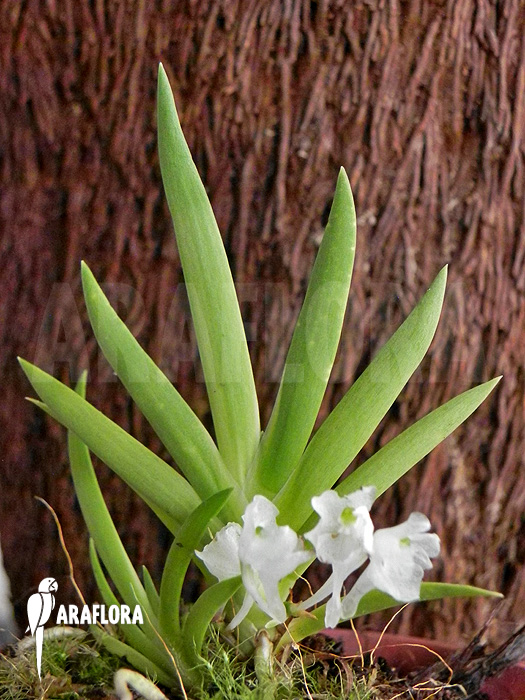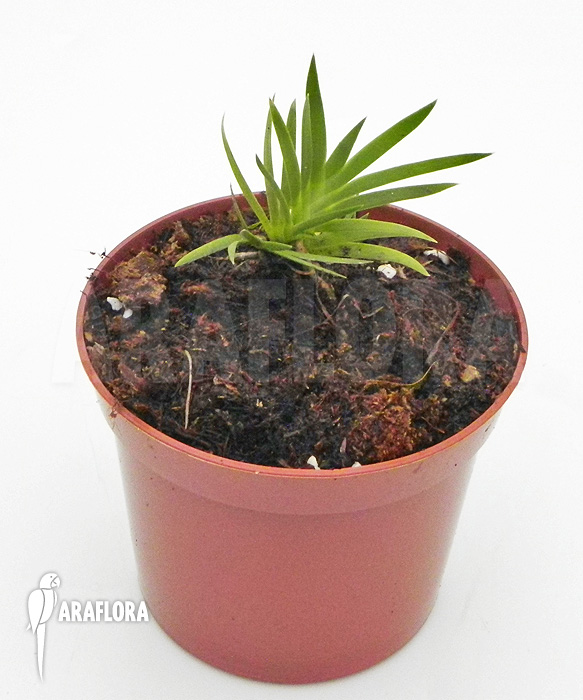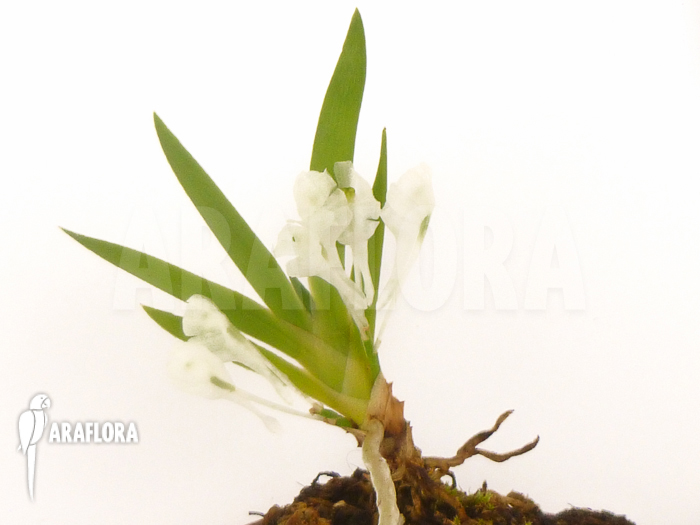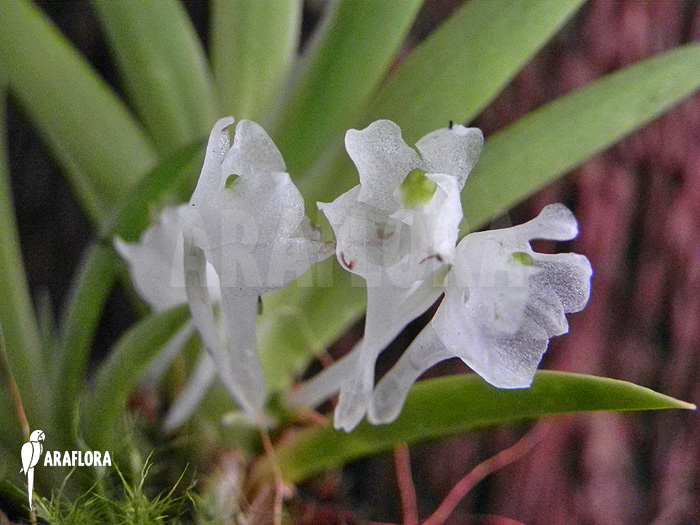Podangis dactyloceras - Orchid147
Podangis dactyloceras - Orchid147
Are you looking for a subtle orchid to give a little boost to your collection? The Podangis dactyloceras is beautiful orchid with interesting white flowers that are almost see-through. A must have for any orchid lover!
Currently not in stock
€ 0,00
Keep me up to date?
Araflora will inform you as soon as the product is available again. Please fill in your e-mail address and we will let you know as soon as the product is back in stock. You will get an e-mail message when the product is available again. Unfortunately we cannot say how long this will be or what the price is likely to be.

Receive an e-mail when new stock of this plant arrives.
Share this plant? Press on one of the following icons.
Podangis dactyloceras originates from Africa's tropical western coast, but can also be found in Tanzania, Uganda and Zaire. This species needs high temperatures and a high humidity. This is why it is often found near rivers and streams at altitudes between 750 and 1.950 meters. The leaves of Podangis dactyloceras are leathery and are shaped like a fan. They're longer (5 centimetre) than the flower stems on which multiple flowers grow, blossoming simultaneously. The flowers are shaped like a fish trap with an attachment similar to the tail of a fish and are slightly transparent. In the middle of the flower you will find a green part, the column.


Podangis dactyloceras flourishes in warm temperatures around 22⁰C. The temperature shouldn't drop below 15⁰C or rise above 30⁰C. A humidity of 80% is needed for a proper growth of Podangis dactyloceras. The orchid should be kept in a semi-light spot, while avoiding direct sunlight. During winter, put it in a lighter spot and give it less water. Water the plant when the substrate has dried slightly. Use rainwater or distilled water to prevent the accumulation of minerals. In practise this will be two to three times a week. Proper airflow combined with a proper humidity will help prevent infections and disease. Orchid-mix will make a suitable substrate, but you can also attach it to a piece of bark. You can find this and other components in our ‘Plant Accessories’ section. Make sure water is able to drain from it. Old flowers can be cut from the plant.










 5 cm
5 cm
 5 cm
5 cm












